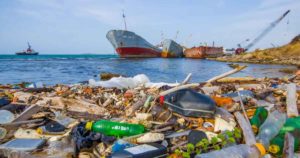Skip to content

Only 1% of the plastic waste in the world’s oceans is immediately visible.
It is an environmental dangers posed by often-invisible microplastics because the vast majority of the plastic waste in the seas is suspended in the water or lies on the seabed.
Microplastics come from a variety of sources, such as clothes being washed, packaging waste, industrial output and disintegrating fishing nets.
Build-ups of plastic were focused in certain areas, such as deep-sea, remote regions, where they can be carried by sediment avalanches and ocean currents , we are warned this could lead to particularly damaging impacts as such areas are generally very biodiverse.
“The problem of plastics is that they last for a very long time so the rate of degradation is very slow and if we keep producing at this rate they will keep accumulating in the oceans.”

